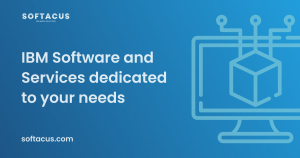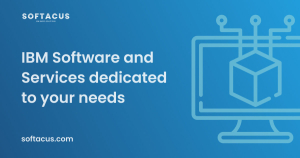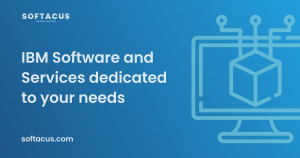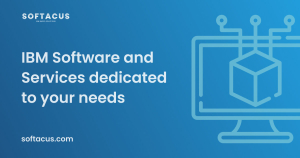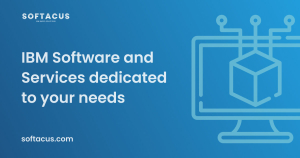- OSLC Home: http://open-services.net
- OSLC on Twitter: http://twitter.com/oslcNews
- OSLC-CM Home: http://open-services.net/bin/view/Main/CmHome
- Details on the RTC Implementation: https://jazz.net/wiki/bin/view/Main/ResourceOrientedWorkItemAPIv2
- Carolyn Pampino on the RQM-RTC integration: http://jazz.net/blog/index.php/2009/08/26/sprint-alignment-for-developers-and-testers/
- Scaling Agile with C/ALM eBook: http://www.infoq.com/resource/articles/scaling-agile-with-calm/en/resources/InfoQ-IBM-ScalingAgilewithCALMeBook.zip
Displaying items by tag: management
Introduction
When it comes to achieving the goals you set, it is important to have the best tools for the job. If you are already using IBM® Rational® DOORS® or are considering using it, there exists something, which can elevate the experience of using IBM® Rational® DOORS® and allow you to further enhance its already impressive capabilities - IBM® Rational® DOORS® Requirements Management Framework Add-on (also referred to as IRDRMFAO).
Challenges
In this article you will learn about what challenges you might encounter while attaining or managing the highest possible level of process maturity and how you can easily overcome them thanks to IRDMFAO.
- Firstly you can encounter problems when it comes to adopting requirements processes and their execution, especially when they are very complex. This can be a particularly significant issue should all stakeholders be involved in the process.
- When large quantities of requirements need to be analysed, it can be quite a lengthy and difficult process, which is why it needs to be as well optimized as possible.
- Consistency can be another huge obstacle, since it’s difficult to maintain between multiple projects. However, it is crucial for success.
- You may need to reach compliance with ISO 15288 and EIA632 standards. This can prove to be quite problematic
- You can get to a point where your process data model has to be updated on the projects that you are currently working on.
Option to solve it
All of these challenges can add up to be quite a problem. Luckily, IBM® Rational® DOORS® Requirements Management Framework Add-on can help you with every single one. It is a solution, which has been created by industry experts for others in the industry, since it can be utilized by a variety of occupations, e.g. Software Engineers, Hardware Engineers, System Engineers and many more. IRDMFAO is in its essence a requirements management add-on, a solution, whose primary aim it is to help you achieve peak time optimization through getting your project on track with a practice, which is one of the very best ones possible with DOORS. To add to that, IRDMFAO is engineered to help you reach compliance with EIA632 and ISO 15288 standards and CMMI recommendations. IRDRMFAO adds utilities, a process and a data model to DOORS. However the most important thing is that all DOORS commands remain accessible for its users, because there is no interference with the DOORS layout.
Preferred solutions
IRDMFAO provides you with several features, which help overcome the aforementioned challenges, firstly, a RMF Generic Data Model (RMF is an acronym which describes information handled by the product or an action performed by the product). IRDMFAO comes up with a universal data model, however you are not limited to only using this one. As a matter of fact, you will be able to pick from an assortment of module types and relationships, which IRDMFAO provides.
In this example of a RMF model, every box serves as a module type (which serves the purpose of instantiating DOORS formal modules). There are also relationships (verifies, refers to…), which are provided by DOORS link modules and linksets.
In short, every action bolstered by the Requirements Management process handles particular elements of the data model and makes use of varying sorts of relationships and module types (also known as templates). For example, System requirements analysis makes use of UR,IDJ SR modules (UR - Users Requirements; IDJ - Issues & Decisions and Justifications; SR - System Requirements) and the “is justified by”, “satisfies”, “refers to” links.
IRDMFAO does not limit you in using a particular data model. It allows you to customize and adapt it for the needs of your project, since you can decide to only make use of some parts and then, if you see fit, continuously add more. This makes adopting requirements processes and their execution simpler and less time consuming, while also making updates to your data model more intuitive, improving efficiency and consistency in the process.
Regarding the analysis of requirements, IRDMFAO has you covered by implementing specialized facilities that will aid you with management of particularly important requirements, whether they are considered hazardous (Critical requirements) or they are especially important to the project (Key requirements). There are also those that fit into both categories. IRDMFAO offers you “Risk analysis” - a specialized view using which you can assign significance and closely observe the especially problematic requirements. Another dedicated view - “Key requirements list” - allows you to do the same with the requirements you deem to be essential for your project. This will allow you to analyze and work with large volumes of requirements requiring analysis and save you precious time while also making the whole process more efficient.
Last but not least, IRDMFAO provides its check project or module consistency tool to help you maintain peak consistency across your various projects and also modules. It is designed to serve as a precursor for a manual check, as it can notice errors and inconsistencies. You can either use it to monitor through collection of already defined rules or utilize the Integrity Check functionality, in which you can establish your own integrity rules.
Specialized solutions. Approaches, tips
Now for a bit of an inside look, let’s inspect how IRDMFAO works. It enables you to instantaneously switch between two approaches that it uses. The first is the document approach, which you can utilize to view structured information (like chapters, sections, paragraphs) or reach a state of universal and continuous visualisation.
The second, database approach, allows you to define data using attributes and evaluate information, filter only the information that matters to you through filters and view traceability matrices.
To properly utilize the advantages that IRDMFAO offers, you will have to either create a new RMF project or transfer a DOORS project that already exists into a RMF project.
An important aspect of IRDMFAO is PUID (Project Unique Identifier). In its essence, it is used as a reference name of objects handled by the product (RMF objects), for example Requirements. There are two rules for this: firstly, two different objects should not have the same PUID values and secondly, the PUID should remain constant, meaning that even after change (editing the text or relocating the object) is done to it, the PUID should not change.
You do not have to do this manually (although you can), since you can allow IRDMFAO to manage the values automatically. This is another way that IRDMFAO makes your life easier.
Conclusion
All in all, IBM® Rational® DOORS® Requirements Management Framework Add-on (IRDMFAO) is an integrated collection of tools, which is immediately usable and upholds the very best practices used in the industry, in particular regarding systems engineering activities. It can help you maximize your potential by facilitating acceleration in adoption and enactment of requirements processes. Additionally, it guarantees compliance with EIA632 and ISO 15288 standards and SEI-CMM-I recommendations, can improve consistency and drastically simplify analysing huge amounts of requirements (and much more!).
Option 1: Project Area or Component Template
How to:
- In the current project go to Project or Component Properties > Templates
- Create New
- Click on data which you want to copy (if you click on Artifact then all artifact will be part of the template
- Create a new project area or component and use a template for creation (template must be downloaded and uploaded if you are porting to a new server)
Advantages:
- Works also for porting to a new server
- Links between artifacts are kept
- project area properties are automatically saved
- Are links within the project area/component are kept
Features

Change Management
Version Control And Configuration Management
But the force of Rational Team Concert is especially perceptible when you apply the tool for managing the versions of whole repositories but not single files only. You will save your artifacts in one or many components, fix the status of the components with snapshots and baselines. As a result of this, you will be able to restore the state of your project to a point how it was any time before. The flexibility of streams allows you to develop the software products in parallel, start any research where the results aren't clear still and avoid mixing them with the project artifacts, urgently fix any defects in the final phase of testing, and continue the development in parallel without any breaks and unexpected impacts.
Planning
Automated building
Reports And Dashboards
Process
Collaboration
Community
Overview
IBM Rational Quality Manager is a collaborative, web-based, quality management solution that offers comprehensive test planning and test asset management from requirements to defects. The Jazz platform enables teams to seamlessly share information. It uses automation to speed project schedules and report on metrics for informed release decisions. It can also be purchased as part of the Collaborative Lifecycle Management solution—a set of seamlessly integrated tools: IBM Rational Team Concert, IBM Rational Quality Manager, and IBM Rational DOORS Next Generation.
Rational Quality Manager works with requirements in IBM Rational DOORS Next Generation to keep test cases in sync whenever requirements evolve. Rational Quality Manager also integrates with a wide range of test automation tools like IBM Rational Functional Tester, enabling you to run tests and collect results, all from a central location.
But when we will take a look at embedded software development, we will find big specifics because it's used on machines and devices that are not typically thought of as computers. Usually, this kind of software is specialized for the particular hardware that it runs on and has time and memory constraints. It can be exactly described that no or not all functions of such software are initiated/controlled via a human interface, but through machine-interfaces instead. We can point to such similar devices as cars, phones, modems, robots, toys, security systems, pacemakers, TV sets, digital watches, various medical devices, etc. This software can be very simple, such as lighting controls running on an 8-bit microcontroller with a few kilobytes of memory, or can become very sophisticated in solutions such as airplanes, missiles, and process control systems.
IBM Rational Quality Manager supports reliable and flexible integration with testing systems from National Instruments specially designed for use in embedded software development. National Instruments (NI) Test Integration Adapter for IBM Rational Quality Manager software enhances test engineer teams' efficiency by automating NI TestStand sequence execution and reporting from Rational Quality Manager.
Engineering departments create increasingly complex products, and as a result, automobiles, aircraft, medical devices, consumer electronics, and more depend on software driving the hardware components. IBM Rational software and National Instruments integrate development and test environments to help clients with their most important goals:
- Test the code of smart products, which might have hundreds of thousands or millions of lines of code, for defects.
- Reduce the cost of code defects by identifying them earlier in the development process.
- Mitigate increasing product complexity by tackling quality challenges earlier in the development process.
- Improve efficiency by breaking down the tasks between engineering departments.
Combining Rational Quality Manager software and National Instruments (NI) TestStand provides comprehensive test case traceability, test case results management, and automated test scheduling and execution. Test results are made available to all teams so that applications can be validated at virtually every point along the development path, from simulation and prototyping, through deployment onto hardware, and integration into the end system. Both operational efficiency and test accuracy can be improved through the ability to reuse test components throughout multiple project phases and even on different projects.
A specially designed piece of software - the NI Test Integration Adapter for Rational Quality Manager software - provides integration between NI TestStand and Rational Quality Manager. This integration product includes the following main features and functions:
The requirement to test traceability: Test engineers can use the integration to link automated tests to test cases and to requirements. NI TestStand applications (and by extension all the code modules called) and parameter files on the test machine are linked to a Rational Quality Manager test case that provides traceability to other project aspects including requirements, overall quality plan, project plan, change-defect management system, and so on.
Test automation: From the web-based interface of Rational Quality Manager, test engineers can invoke the execution of the NI TestStand applications that are linked to the Rational Quality Manager test case. The execution status reported by the NI TestStand sequence is displayed in the Rational Quality Manager web interface as part of the test case execution results. Test engineers can then optionally create defects linked to the test case results to keep track of noncompliance detected by running the test.
Test case results management: Upon completion of the NI TestStand sequence, various outputs from the sequence are automatically published to Rational Quality Manager storage and an HTML report is linked to the Rational Quality Manager test case execution result page. The HTML report is created by this software product on the local machine and the details of the report content as well as what is stored in IBM JazzTM are configured by the user.
Videos
Excellent video about the integration of modeling, requirements, and testing software development areas into the whole software development process with solutions from IBM and National Instruments.
Simulink from The MathWorks, Inc. (an American privately held corporation that specializes in mathematical computing software) is graphical programming software for building models, simulations, and analyses for complex dynamical systems. It offers tight integration with the rest of the MATLAB environment. The tool can be very useful in automatic control and digital signal processing for multidomain simulation and Model-Based Design.
For completeness, the DNG public API's that are available are:
- RDNG Reportable API - extracting read only information from RDNG generally for creating custom reports to be run from DNG or RPE. As well, it can be used in a lot of custom applications interacting with RDNG. Big advantage of this API is its simplicity and great performance if you need to work with big amounts of data. Sometimes it's called as RDNG Reportable REST API.
- OSLC RM V2 API - the open standard way to programmatically integrate with DOORS Next Generation, there is an elaborate workshop to get you started here OSLC Workshop article. These programs can be from any language that supports various HTTP methods of requests, e.g. Java, C# etc. Hence these are more flexible to run and can read and update DNG data, as part of a web server, or standalone, but have some limitations set by the current OSLC standard, for example module support. In release 6.0.5 extension have been added for modules. It's very powerful tool to work with RDNG data including capabilities of data modification but can be a little bit more complex in use than other ways.
- TRS 2.0 - the OSLC Tracked Resource Set open standard REST API to hook into the stream of low level changes done to resources in the DNG application (and other Jazz apps as well); read only.
- RM API - it's realized in client extension capability that is accessible from Rational DOORS Next Generation. This is Javascript extension framework that generally can be added as widgets which you can run from the dashboard, and can be used to view and edit DNG data. The widgets are developed in accordance to OpenSocial standard (based on Google Gadget framework). It's more tailored to DNG, so has better module support, but is limited to be run in a browser/javascript environment. It's very easy to make an automation of your work in this way. You can do a lot of interesting tricks with currently open Web page based on DOM/XML standards. You can add support of many popular libraries such as JQuery and so on. But this big simplicity results in some constraint in implementation. For example, you can easily access RDNG artifacts in current module or collection as well as access any selected artifacts but there are some difficulties if you need access artifacts in current view or currently available on the page. But use RM API together with other APIs described above can allow you do stunning things with RDNG.
Helpful Links
Ord. Link Comment 1 API Landing page This is a landing page for the various API wiki pages that exist on the Jazz.net development wiki as well as a central collective page of the known APIs that are available for integrating programmatically with our CE/CLM products. It serves as a convenience for accessing API information about CE/CLM products and is not guaranteed to have up-to-the-minute information. 2 DOORS Next Generation Reportable API The DOORS Next Generation server provides REST APIs for accessing information about requirement artifacts for reporting. You can access each API by using a standard web browser, IBM Rational Publishing Engine or a third party tool can can consume the DNG reporting services responses. This document covers reporting capabilities for DNG versions 6.0 and higher. 3 Using OSLC capabilities in the Requirements Management application You can use Open Services for Lifecycle Collaboration 2.0 (OSLC) capabilities in the Requirements Management (RM) application for the Rational solution for Collaborative Lifecycle Management (CLM). This article includes examples of how to use those capabilities in an HTTP poster tool. These basic examples are described. 4 Open Services for Lifecycle Collaboration Workshop The workshop will help guide you to leverage the Open Services for Lifecycle Collaboration (OSLC) standard interfaces for interoperating with Jazz-based products including RDNG. These labs will highlight key aspects by leveraging web browser access and programmatic access via Java client programs. The final lab will illustrate by an example how to write your own server using Java servlets. This lab is based on the OSLC-CM 2.0 and OSLC-RM 2.0 Specification. After you complete these labs, you will have a good foundation by which to leverage OSLC to implement an interoperability project. 5 OSLC Requirements Management Version 2.1. Part 1: Specification This specification defines the OSLC Requirements Management domain, also known as OSLC RM. The specification supports key RESTful web service interfaces for software Requirements Management systems. 6 OSLC Requirements Management Version 2.1. Part 2: Vocabulary This specification defines a vocabulary and resource shapes for the OSLC Requirements Management resources. 7 IBM DOORS Next Generation Server API Documentation (additions from v6.0) Additions to standard OSLC API specially developed for use with RDNG. It takes into account some RDNG specifics that is out of scope of OSLC specification. 8 Getting Started with RDNG Extending Capabilities Brief video giving a quick introduction into client extending capabilities. 9 Client extension API for the Requirements Management (RM) application This document specifies the client extension API that forms part of the 6.0.5 release of the Requirements Management (RM) application. The version of this API is 1.1. 10 Client extension capability (all versions) List of links to client extension APIs for all supported versions. 11 jQuery API Useful API when developing RDNG client extensions. 12 Web APIs When writing code for the Web with JavaScript, there are a great many APIs available. Below is a list of all the interfaces (that is, types of objects) that you may be able to use while developing your Web app or site.
Useful Links
https://www.facebook.com/oslcfest/
DOORS Next Generation (v4.0.6): Adding an extension to your dashboards via URL
https://www.youtube.com/watch?v=q3DxAneAPYQ
Adding widgets to the widget catalog of IBM Rational DOORS Next Generation (V4.0.6)
https://www.youtube.com/watch?v=mXl1YcDYjVg

